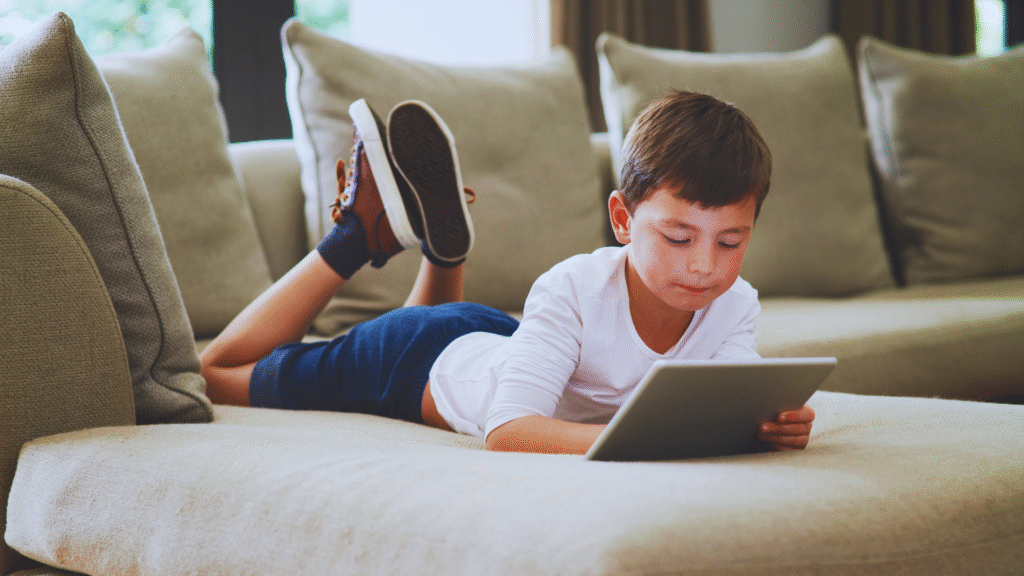Managing screen time has become a crucial topic for many families as technology becomes increasingly integrated into daily life. Parents often struggle with how to balance their children’s screen time with other essential activities. Establishing clear rules and consistent routines can help parents effectively manage excessive screen time while promoting healthier habits.
Setting specific limits on screen usage is a vital step. By creating designated times for recreational screen use and encouraging breaks, parents can foster a more balanced lifestyle. Engaging children in alternative activities, such as outdoor play or reading, can also lessen their reliance on screens for entertainment.
Communication plays an essential role in this process. Talking with children about the importance of managing their screen time can empower them to make better choices. Parents can lead by example, showing their children how to engage with technology mindfully and responsibly.
Understanding Screen Time
Screen time encompasses the duration that children spend using digital devices, including smartphones, tablets, computers, and televisions. Managing this time is essential for minimizing negative impacts on behavior, fostering creativity, and ensuring a balanced lifestyle that includes physical activity.
Defining Screen Time and Its Impacts
Screen time is typically categorized into recreational and educational use. Recreational screen time involves activities like gaming and social media, while educational use includes online learning and interactive applications.
Excessive screen time can lead to negative behaviors such as increased aggression and reduced attention spans. It may encourage sedentary lifestyles, impacting physical health by decreasing exercise levels. Moreover, prolonged exposure can induce eye strain, leading to discomfort and potential long-term effects.
Parents should establish time limits and encourage breaks during screen use. Balancing screen time with outdoor play and family activities can mitigate adverse effects and promote healthier habits.
Evaluating the Role of Digital Devices in Child Development
Digital devices play a complex role in child development. While they offer access to educational content, excessive use can hinder social skills. Engaging with peers through social media may foster connections, but it can also lead to issues like cyberbullying.
Creativity can benefit from digital tools through art applications and interactive storytelling. However, it’s crucial that children have offline experiences that stimulate imagination and physical activity.
Monitoring device usage is vital. Parents can guide their children by selecting appropriate content and setting reasonable boundaries to encourage healthy development. Emphasizing physical activities alongside screen time fosters a more balanced approach to modern childhood.
Establishing Healthy Habits
Creating a structured approach to screen time is essential for promoting healthy habits. Parents can implement a family media plan, set limits, and encourage physical activities to ensure balanced and enriching screen usage.
Creating a Family Media Plan
A family media plan outlines the appropriate use of screens, considering each family member’s needs. Parents can create this plan together with their children, discussing which activities are acceptable and which are not.
Key elements can include:
- Types of media: Identify educational vs. entertainment content.
- Usage times: Designate specific hours for screen time.
- Content restrictions: Set age-appropriate guidelines for what can be viewed.
This involvement fosters responsibility and allows children to take ownership of their media choices.
Setting Appropriate Time Limits
Establishing time limits is crucial for effective screen management. Parents should tailor limits according to age and individual needs while considering other activities.
For example:
- Toddlers (0-2 years): Minimal to no screen time, focusing on interaction.
- Preschoolers (2-5 years): Up to one hour of quality content.
- School-age children (6-18 years): Encourage balancing screen time with homework and chores, ideally limiting non-educational use to 1-2 hours daily.
Regularly revisiting these limits ensures they remain relevant as children grow and their needs change.
Encouraging Physical Activity and Outdoor Play
Incorporating physical activity and outdoor play is vital for a balanced lifestyle. Regular exercise not only improves physical health but also enhances mental well-being.
Suggestions to promote these activities include:
- Scheduled outdoor time: Set aside specific hours for play outside.
- Active family outings: Go for hikes, bike rides, or trips to parks together.
- Group activities: Join local sports teams or community events that encourage movement.
These practices help children prioritize physical activity while fostering family connections.
Utilizing Tools and Resources
Effective management of screen time involves utilizing a variety of tools and resources. These can include parental controls, educational apps, and expert guidance. By implementing these solutions, parents can create a balanced digital environment for their children.
Implementing Parental Controls
Parental controls are essential for managing a child’s access to content on digital devices. Many devices, such as iPads and gaming consoles, come with built-in settings.
Key features include:
- Time Limits: Set maximum usage time for apps and games.
- Content Restrictions: Filter inappropriate content based on age.
- Monitoring Tools: Track app usage and screen time.
By customizing these features, parents can ensure a safer digital experience.
Selecting Educational Apps and Games
Choosing the right apps and games can enhance learning while managing screen time. Parents should look for educational content that aligns with their child’s interests and school curriculum.
Recommended categories include:
- STEM Apps: Applications focusing on science, technology, engineering, and math.
- Creative Tools: Programs that encourage creativity, such as drawing or coding.
Minecraft, for example, can serve as an educational tool while still being entertaining. Parents should review app ratings and content before downloading.
Learning From Experts at Common Sense Media
Common Sense Media offers resources and reviews to guide parents in making informed decisions. Their platform provides insights into age-appropriate content and screen time recommendations.
Benefits include:
- Reviews: Detailed evaluations of apps and games.
- Articles: Expert advice on managing screen time effectively.
- Community Forums: Opportunities to connect with other parents.
Utilizing the insights from Common Sense Media can empower parents to foster a balanced approach to technology use among children.
Balancing Screen Time with Daily Activities
Effectively managing screen time requires integrating it with daily responsibilities and fostering activities that promote creativity and social interactions. Parents can adopt strategies that blend screen use with homework and chores while encouraging alternative forms of engagement.
Integrating Screen Time with Homework and Chores
To create a productive environment, parents can set specific times for screen use that coincide with homework or chores. For instance, after completing a set amount of homework, a child might earn 30 minutes of screen time as a reward.
Parents should establish a schedule that includes:
- Homework first: Allocating dedicated time for academic tasks before screens are allowed.
- Chore intervals: Assigning a small chore to be completed before screen breaks. This can maintain a balance between responsibilities and entertainment.
Using timers can help children manage their time effectively. A focused approach to completing tasks can make screen time feel more rewarding and structured.
Promoting Creativity and Social Interactions Without Screens
Encouraging activities that do not involve screens is vital for a child’s development. Parents should promote creativity through hands-on projects and games that stimulate the mind.
Options may include:
- Arts and crafts: Setting up creative sessions where children can paint, draw, or build models.
- Outdoor games: Encouraging playtime outside with friends to enhance social skills.
Organizing regular screen-free family activities can strengthen bonds and foster communication skills. Setting aside time for family board games or musical sessions adds diversity to daily interactions, ensuring children engage in various enriching experiences.





